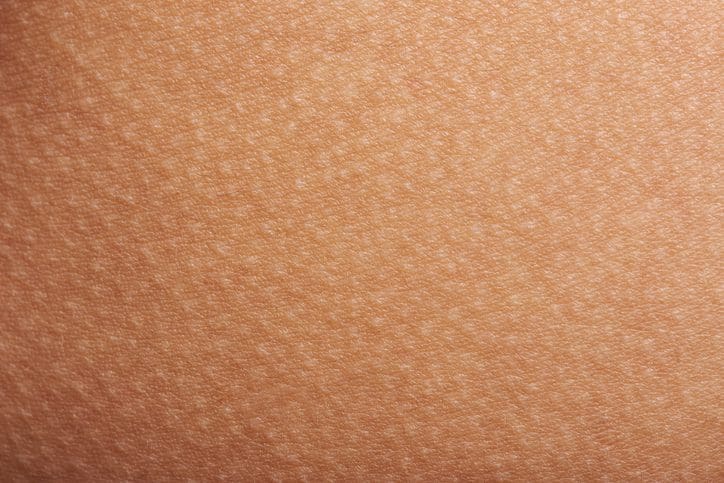Keratosis Pilaris Treatment
Are you looking for a keratosis pilaris treatment, to help them manage the skin condition and improve the overall texture and appearance? Exfoliating aggravates the condition and triggers the appearance to become worse in many cases. There is no cure at present for the disorder. However, you can better manage the condition and reduce the severity. The extent of the repair depends on the individual. We have treated individuals who have been impressed that their skin health has returned after keratosis pilaris treatment with laser. However, there is no guarantee that the keratosis pilaris will not return.

What is Chicken Skin?
Keratosis pilaris is a skin condition where the skin may look like “chicken skin”. It’s common to find it on upper arms, buttocks/thighs, and forelegs on individuals of all ages. It can be the result of coiled hairs that rupture the follicular epithelium, which leads to inflammation and increased levels of keratin in the area (1). Therefore, keratosis pilaris treatment with a laser may be the result of a reduction in the number of coiled hairs in the skin area, resulting in less disruption of the follicular epithelium.
This process of increased keratin in the skin is termed as keratinisation (2). This occurs within the stratum corneum, which is the uppermost layer of the skin. Healthy outermost cellular layers have cells that contain cytoplasm, but in this case, keratin is there instead. Also, the rejuvenation effects of intense light sources may be the reason for the keratosis pilaris treatment using lasers, as they initiate skin cell repair.
Having Keratosis Pilaris Treatment
At Clear Medical we have helped many individuals improve their overall skin condition when they undergo Keratosis Pilaris treatment. For many years the use of lasers has been investigated for aesthetic skin applications since their entry onto the market in the 90s. IPL light sources have shown visible improvements in the tone and texture of the skin (3).
We recommend a minimum of 6 treatments to observe the full extent of the results that can be achieved. Treatment intervals are every 6-12 weeks, this depends on the recommendation made by your clinician at the time of treatment. As the treatment involves the use of lasers and a patch test is essential, 5 days prior to your first treatment.
If you have any questions or queries, please do not hesitate to contact us.
References:


